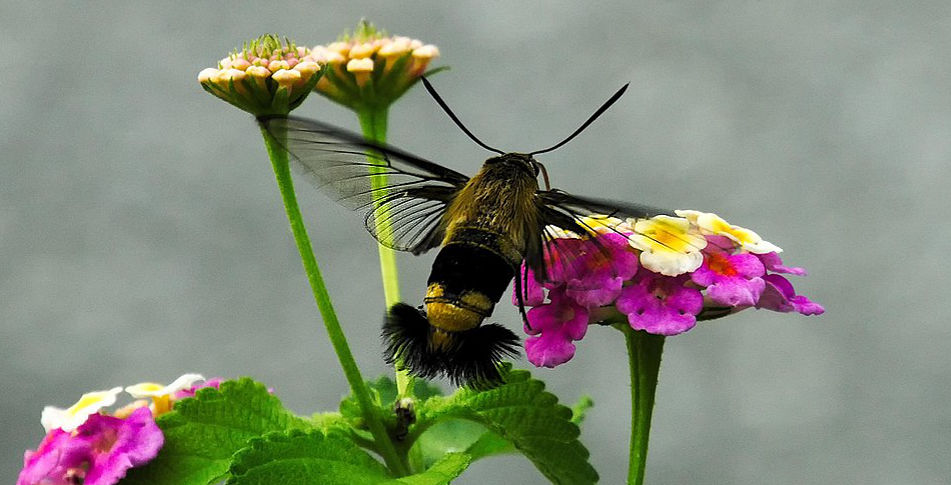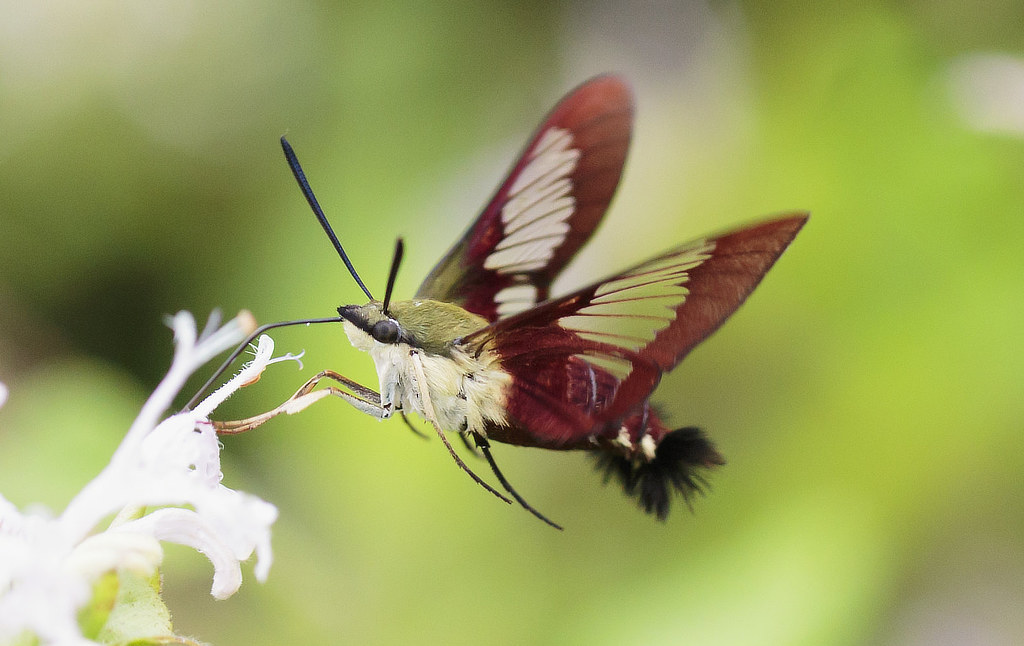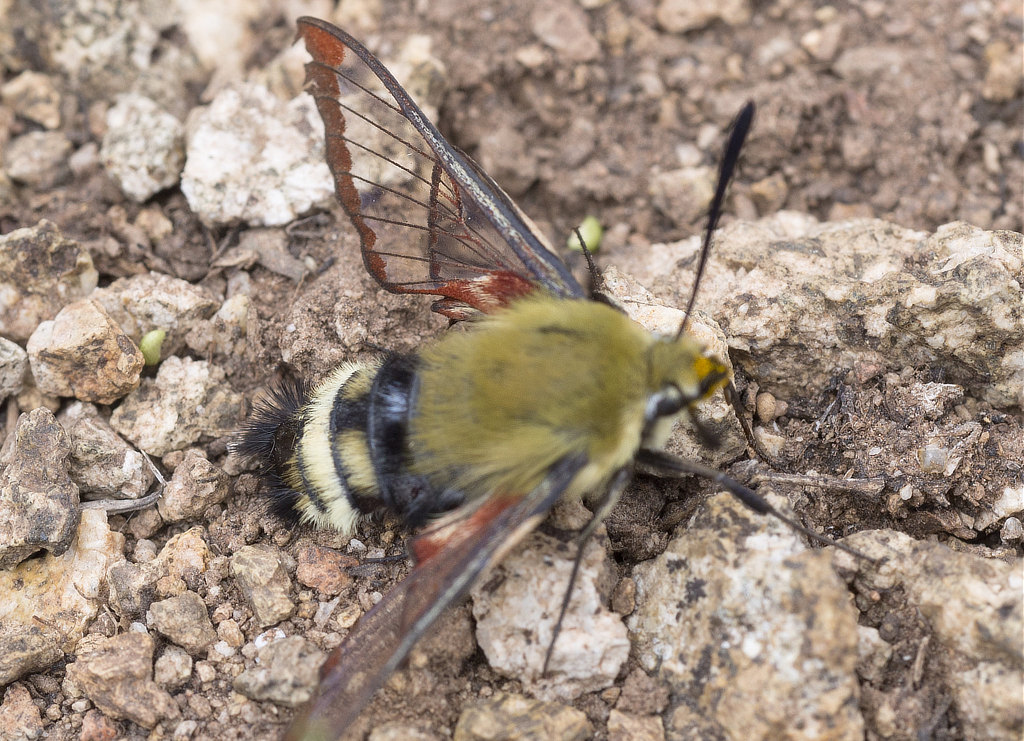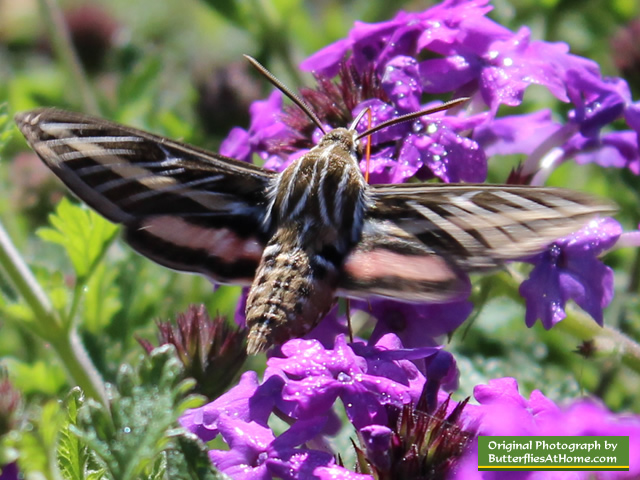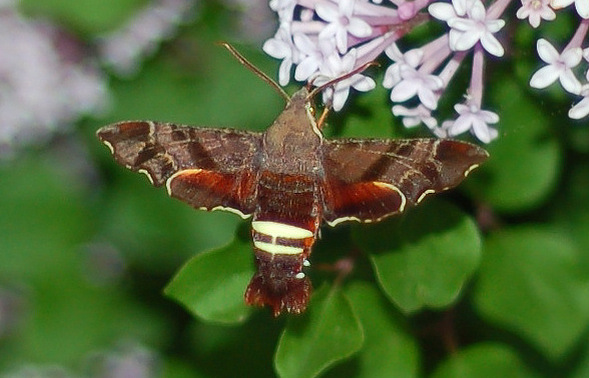Hummingbird Moths
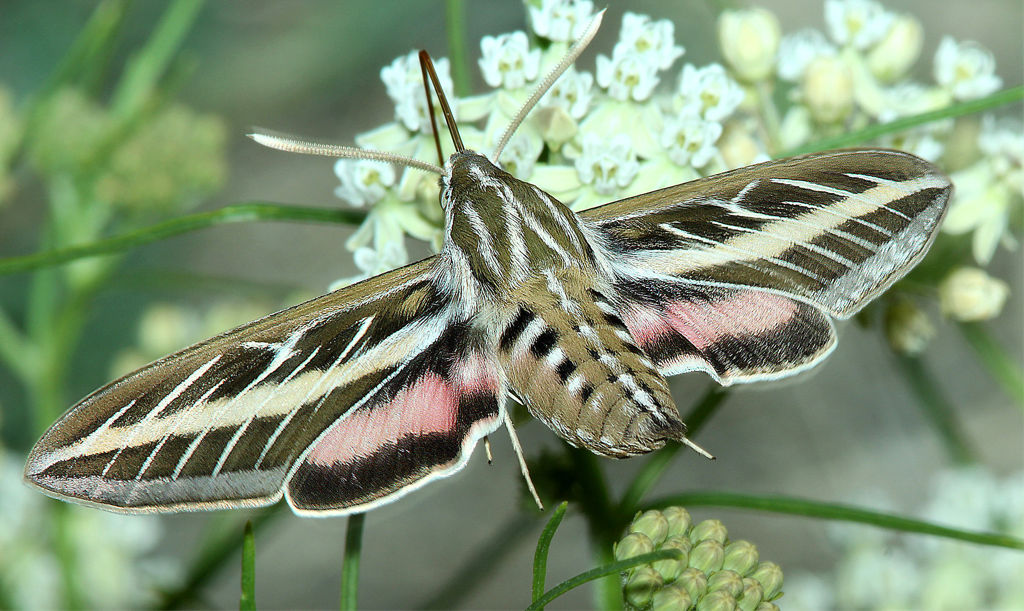 One type of hummingbird moth: The White-lined Sphinx |
Hummingbird moths are part of a family of many medium to large moths in the Sphingidae family and Hemaris genus. They are in the sphinx moth or hawk moth family, and hover like an actual hummingbird.
Hummingbird moths can be found not only in North America, but in Europe, Africa, and Asia. They have a wide range in the United States from Texas and Florida to Maine and Alaska as well as in some Canadian provinces. In Britain they are commonly called Bee Hawk-Moths.
It feeds through a proboscis, a long, straw-like tube kept curled under the head when not in use. They can be beneficial through pollination of many species of plants.
While most moths are active at night, hummingbird moths are also active during the day, beating its winds up to 70 beats per second.
There are many types of Hummingbird Moths, over 100 in the U.S. and Canada, including these common ones:
- Snowberry Clearwing Moth (Hemaris diffinis) - often mistaken for a bumblebee due to its color and flight patterns. Its abdomen of yellow and black segments also appear similar to a bumblebee. So it is sometimes called the Bumblebee Moth.
- Hummingbird Clearwing Moth (Hemaris thysbe) - This species in the Family Sphingidae is fairly common throughout the eastern half of the U.S. and Canada. Coloration varies but is typically reddish, with olive green and burgundy on its back, and white or yellow and burgundy on the underside. Its wings are transparent with a reddish-brown border. Sometimes called the Cinnamon Clearwing.
- Slender Clearwing (Hemaris gracilis) - Resembles the Hummingbird Clearwing
- Rocky Mountain Clearwing (Hemaris thetis) - Sometimes called the California Clearwing; found in the western U.S. states and British Columbia
- White-lined Sphinx Moth (Hyles lineata) - large and has a stout furry body with a brown head. Their forewings are mostly brown with a thick white line from the base of the head toward the tip of the wing. Six thin white lines protrude from the thick white line.
- Nessus Sphinx (Amphion floridensis) - has two yellow bands on the abdomen to mimic a wasp as it hovers over blooms. The tip of the abdomen has a tuft of hair that resembles tail feathers. Flashes of bright orange-pink on the hindwings can be seen on spread wings.
- Titan Sphinx (Aellopos titan) - dark brown moth with a wide white stripe across the abdomen. The wings are dark brown and the upperside of the forewing has a black spot at the end of the cell and two bands of translucent white spots.
- Five-Spotted Hawkmoth
Although the caterpillars feed on leaves of various plants, most are innocuous, attracting little attention and causing little, if any, injury to garden plants. Tomato and tobacco hornworms, which feed on tomatoes and a few related plants, are an exception, which can be true garden pests.
Snowberry Clearwing Hummingbird Moth (Hemaris diffinis) |
|
Hummingbird Clearwing (Hemaris thysbe) |
|
Rocky Mountain Clearwing (Hemaris thetis) |
|
White-lined Sphinx Hummingbird Moth (Hyles lineata) |
|
Nessus Sphinx (Amphion floridensis) |
 |
|||
Looking for butterfly gift ideas? Check out these popular items at our Amazon Store |
|||
Outdoor Butterfly Hanging Flag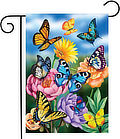 |
The Life Cycles of Butterflies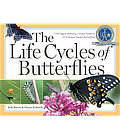 |
Butterfly Sterling Silver Pendant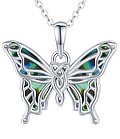 |
|
Butterfly Habitat Cage |
Butterflies Adult Coloring Book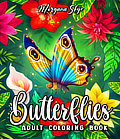 |
Butterfly Solar-Powered Windchime |
|
|
|||

